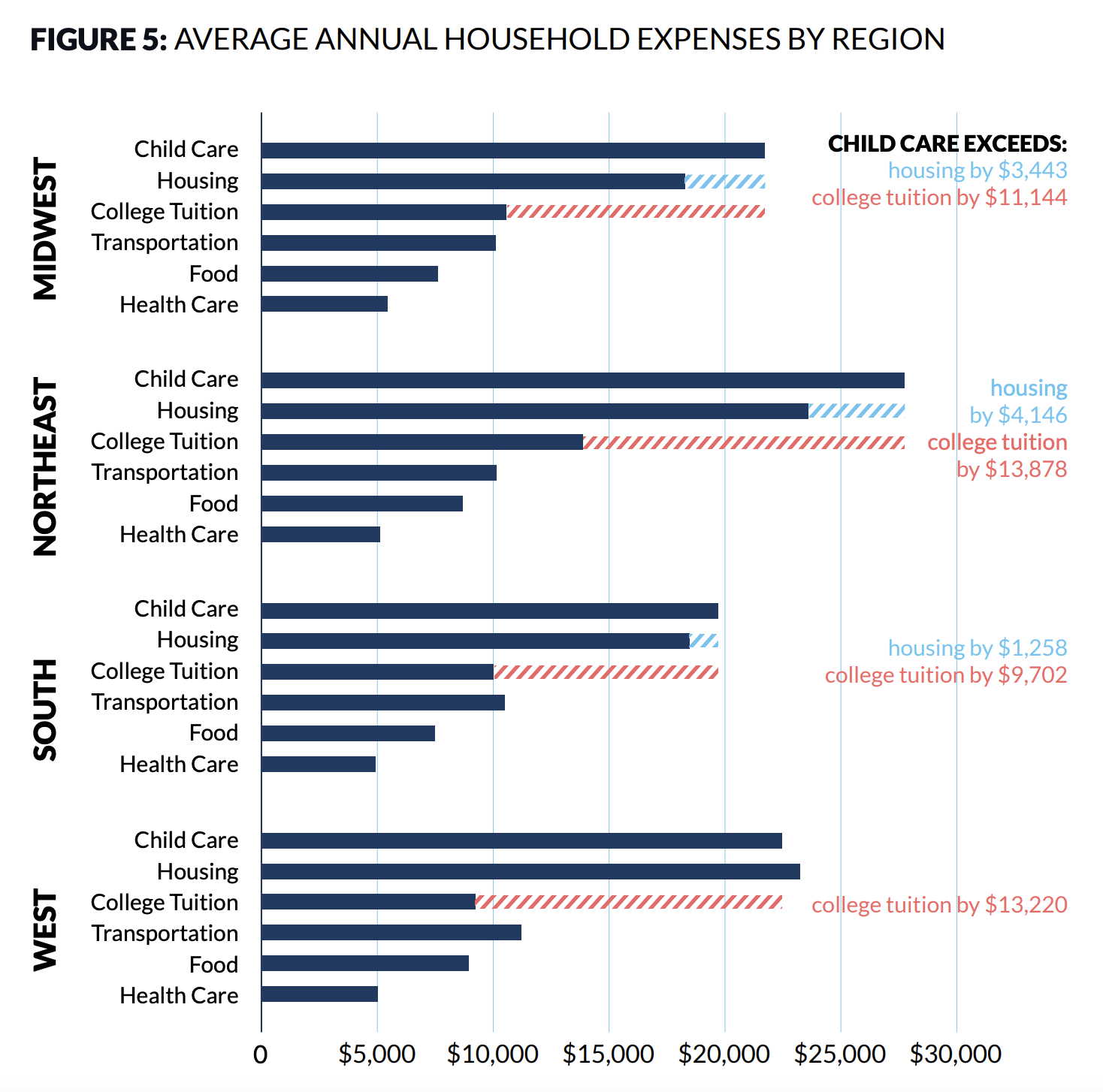Parents Are Turning Down Job Interviews Because They Can’t Afford Childcare
- A growing number of workers are turning down interviews because they can’t afford childcare.
- The cost of childcare is outpacing the average rate of inflation.
- As a result, parents (especially mothers) struggle to re-enter the workforce or change jobs.
- Nearly 40% of workers think the government should do something to help.
It’s been a brutal couple of years for working parents — especially working moms.
During the first year of the COVID-19 pandemic, 2.4 million women left the workforce, according to the Pew Research Center.
Why? Because someone had to take care of the kids while schools and daycares were closed or sent children home for endless extended quarantines. And that someone was usually mom: Globally, women took on about three times as much childcare as men in 2020, reports the Center For Global Development.
Mothers are finally starting to claw their way back into the workforce. But to do that, they need access to affordable childcare.
null
In our latest survey, 16% of survey respondents told BestColleges that the cost of childcare is the biggest financial barrier preventing them from preparing for and participating in job interviews.
Workers Want the Government to Help
According to our survey, nearly 40% of workers think the government should support people through employment transitions.
Parents did get a little extra help in 2021 when the American Rescue Plan provided taxpayers with enhanced child tax credits. An April 2022 working paper by the U.S. Bureau of Labor Statistics says that parents spent most of the extra money on their children’s clothing, food, and childcare expenses.
But in 2022, the child tax credit reverted back to pre-pandemic amounts despite job losses, wage stagnation, inflation, and rising childcare costs.
“Right now, the government’s support is insufficient to cover the actual cost of quality childcare,” said Maria A. McDowell, founder of EasySearchPeople. “That leaves the significant burden of childcare to families. I’ve had to turn down interviews and jobs because I just couldn’t afford to take them.”
The Average Cost of Childcare
7%
The maximum percentage of household income that should go toward childcare, according to the U.S. Department of Health and Human Services
35%
The average percentage of a single parent’s income that actually goes toward childcare in 2022, according to Childcare Aware of America (CCoA)
“After giving birth to my third child, I was invited to three job interviews. I realized quickly that if I accepted any of them, I would need to put all three of my children in daycare — which would mean something like three-quarters of my salary would be paying for care,” said Theola Tinney, who went on to co-found her own company, VinPit.
Her family’s total income minus the cost of childcare still doesn’t leave much to work with. “We rely on couponing, discount shopping, and growing our own food to keep expenses down,” said Tinney.
The Cost of Babysitters in 2022
According to a recent report by CCoA:
- The price of childcare has exceeded the national inflation rate for the last two years.
- The annual price of center-based childcare for an infant exceeds the cost of housing in three out of four regions: the South, the Midwest, and the Northeast.
- In all four regions (the South, the Midwest, the West, and the Northeast) the annual price of childcare exceeds the annual cost of in-state tuition at a four-year university.
When center-based childcare is prohibitively high, people turn to babysitters to fill in the gaps.
But as CNBC reports, the cost of babysitters has jumped 11% in the last year alone.
The national average is now over $20 an hour for one child. In many parts of the country, the costs are far higher.
null
“When I decided to re-enter the workforce, I had to go to an interview in person. I needed a babysitter for about eight hours. One sitter was asking $50 an hour! The cost was just way too much: I had no choice but to give up my interview slot to someone else,” said Shannon Dylan, co-founder of Management Help LLC.
What Lack of Access to Childcare Costs Women
According to The Century Foundation, when women can’t access safe, affordable, and stable childcare:
- The hours they are able to work are reduced.
- They experience interruptions to job and career advancement.
- They lose promotions and wages.
- They lose opportunities for learning and skills development.
- They are pushed out of the workforce altogether.
- They have lower retirement savings and higher poverty rates as they age.
The high cost of childcare creates leaves many moms choosing between two crummy options if they can afford to choose in the first place:
Option 1: Devote the bulk of their income to childcare (essentially paying for the privilege of staying in the workforce).
Option 2: Suffer long-term financial and professional harm to stay home with the kids and save money on childcare.
What Lack of Access to Childcare Costs Everyone
According to the Brookings Institution, “parents with minor children comprise almost one third of the US workforce; any economic recovery will rely on their continued participation or reentry into the labor force.”
Providing affordable, safe, and stable childcare is a powerful way to keep parents in the workforce. And it’s not a wild ask — The Century Foundation estimates that federal investment in comprehensive childcare and pre-K would generate massive economic upsides, including:
- $48 billion in economic output from increases in parental employment
- $60 billion in gains for businesses and state tax revenue from decreased child-care related disruptions
- At least a $30 billion boost to the economy as a result of added childcare sector related job increases
You don’t have to be an economist to recognize those gains are a pretty strong return on investment. Over 138 billion dollars? That’s almost enough to cover the babysitter.
